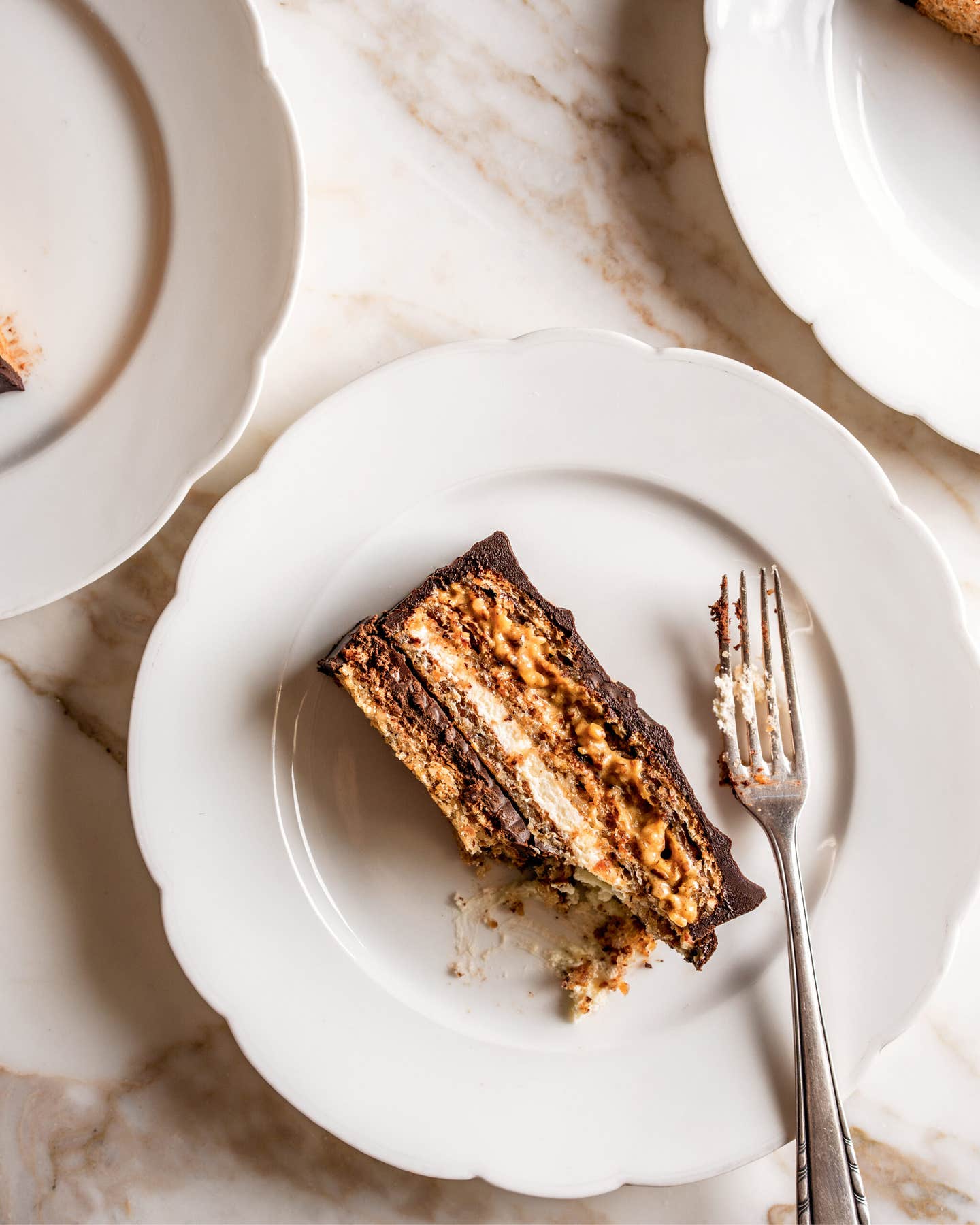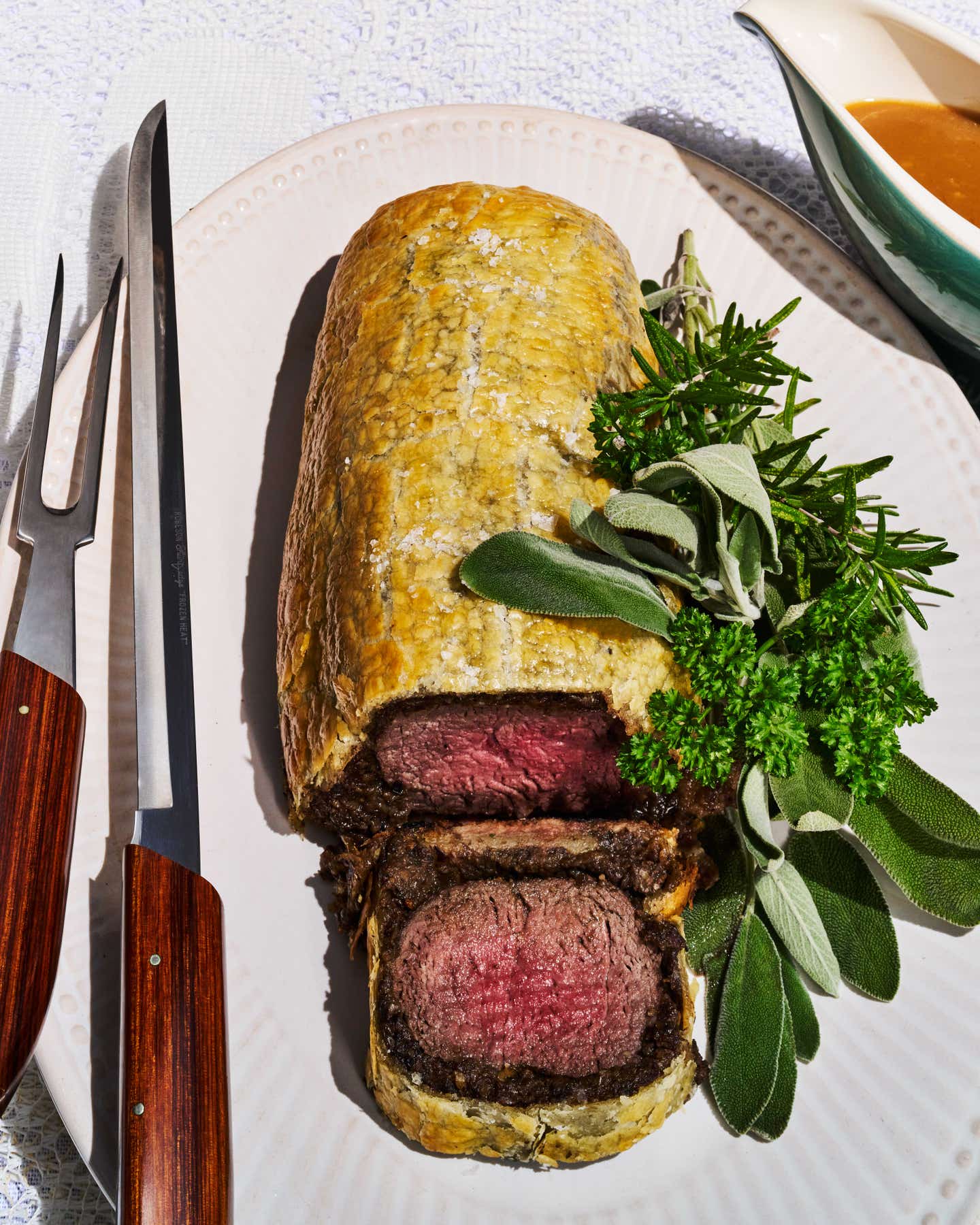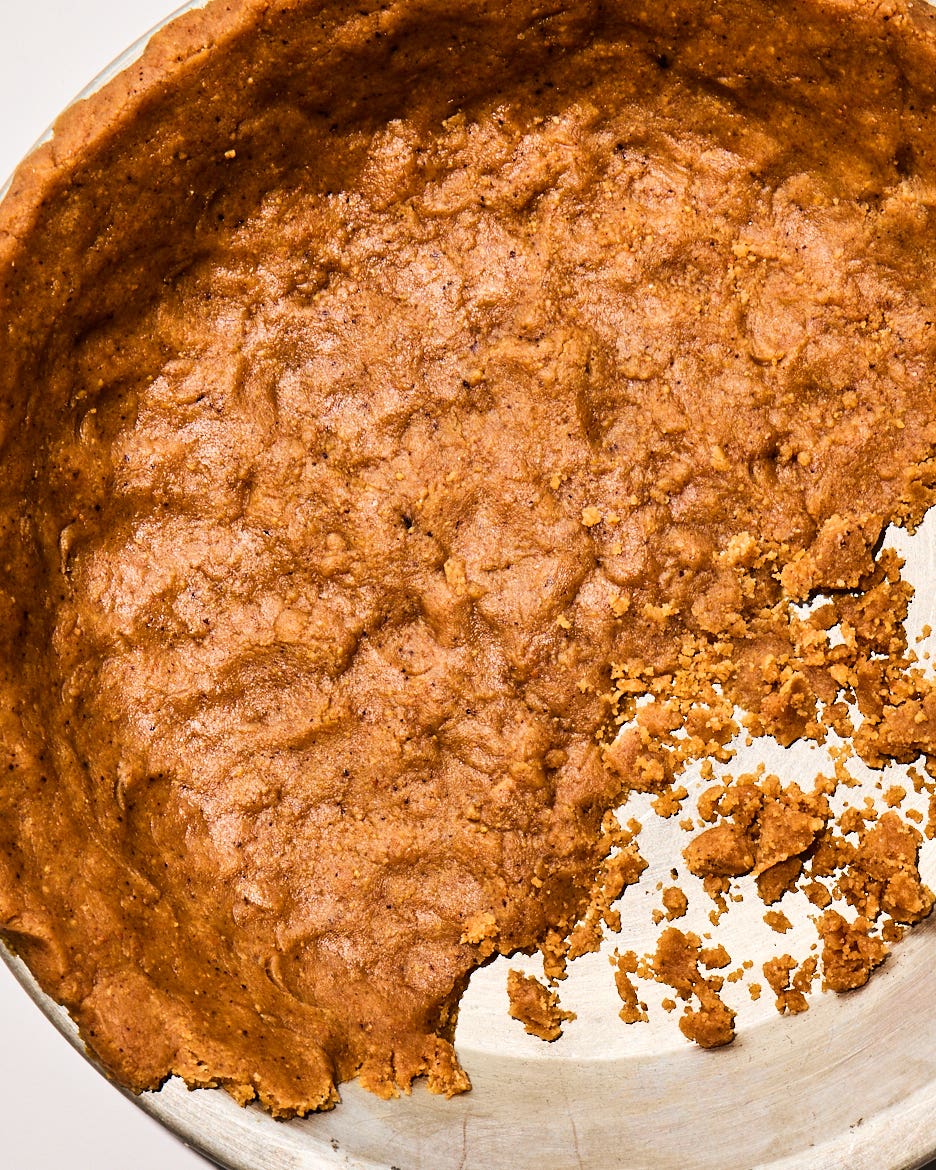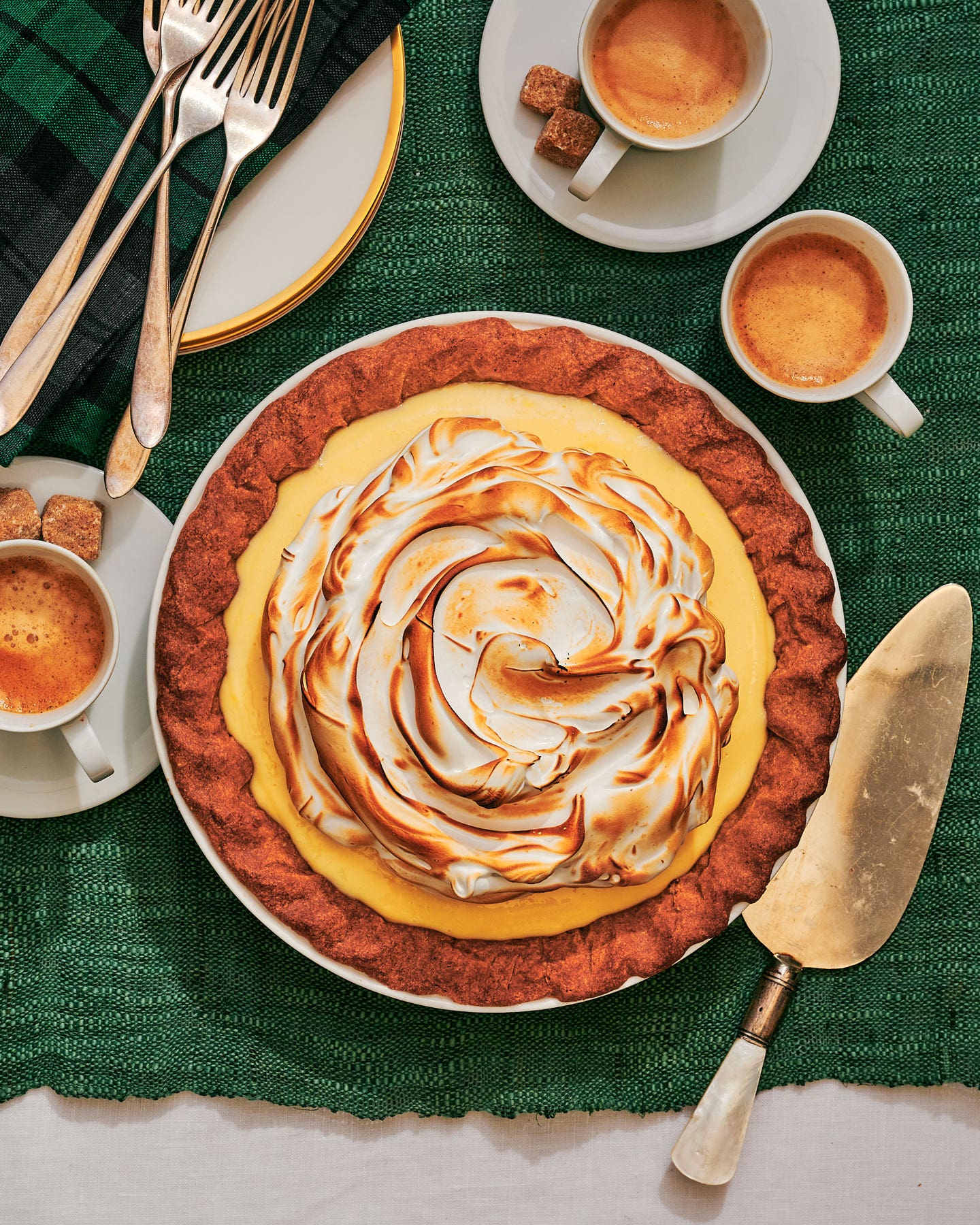This Old-School Veal Saltimbocca Is Worth Mastering
Served in practically every trattoria in Rome, the quick, elegant dish is a classic for a reason
- Serves
serves 4
- Time
30 minutes
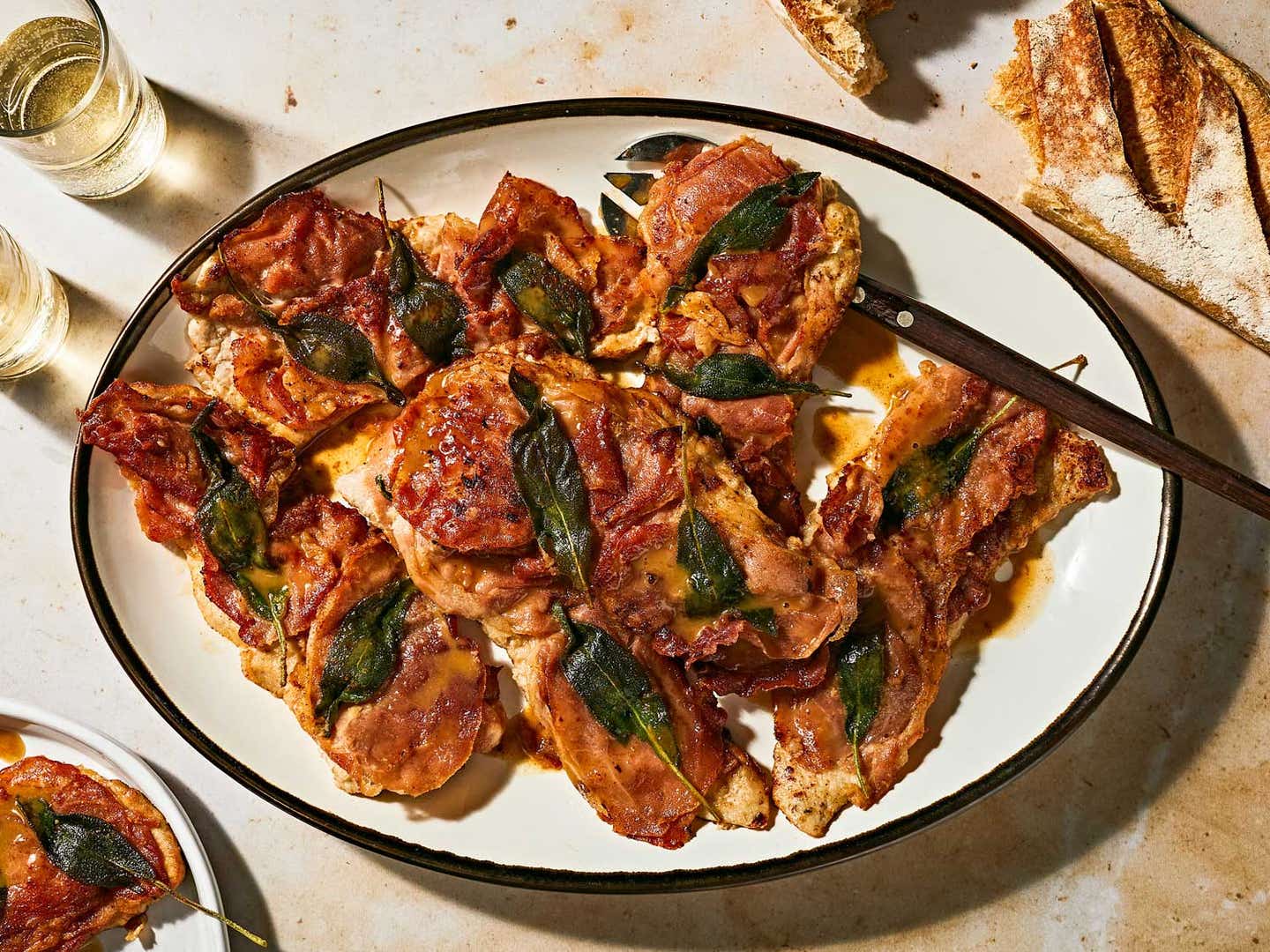
While we've already professed our love for Austria's schnitzel in The Way We Cook, this week we're celebrating a cutlet from another part of the globe: Italy's saltimbocca. A Roman specialty that dates back to the 19th century, it conjures deep flavor from just a few main ingredients: veal, prosciutto, and sage. In the U.S., the dish is often buried on the menu at red-sauce joints, neglected in favor of its more popular cousins veal piccata and Marsala. But in Italy, saltimbocca continues to be a mainstay at trattorias in the Eternal City and beyond.
Depending on what region you're in, the dish might be made with chicken, pork, or fish instead of veal; pancetta instead of prosciutto; or with a layer of mozzarella under the cured pork. While traditionalists call for cooking and serving saltimbocca flat, many cooks roll the prosciutto and sage inside the veal, making it more akin to involtini, Italy's rolled and stuffed meats. However it's prepared, the dish stays true to its name: saltimbocca literally translates to "jumps in the mouth," an apt description for what happens when you take a bite.
Our recipe is adapted from Lidia Bastianich's 2001 cookbook Lidia's Italian-American Kitchen and incorporates all the signature elements of a classic Roman saltimbocca. Veal cutlets are pounded thin, draped with prosciutto and sage, dredged in flour, and fried until they're crisp. The pan is then deglazed with marsala and chicken stock to create a velvety sauce. The cured pork, fresh herbs, and instant pan sauce do wonders for lean, mild veal, lending the meat an incomparable flavor and texture. It's one of those rare restaurant dishes that's actually easy to make at home. Here's our formula for foolproof saltimbocca.
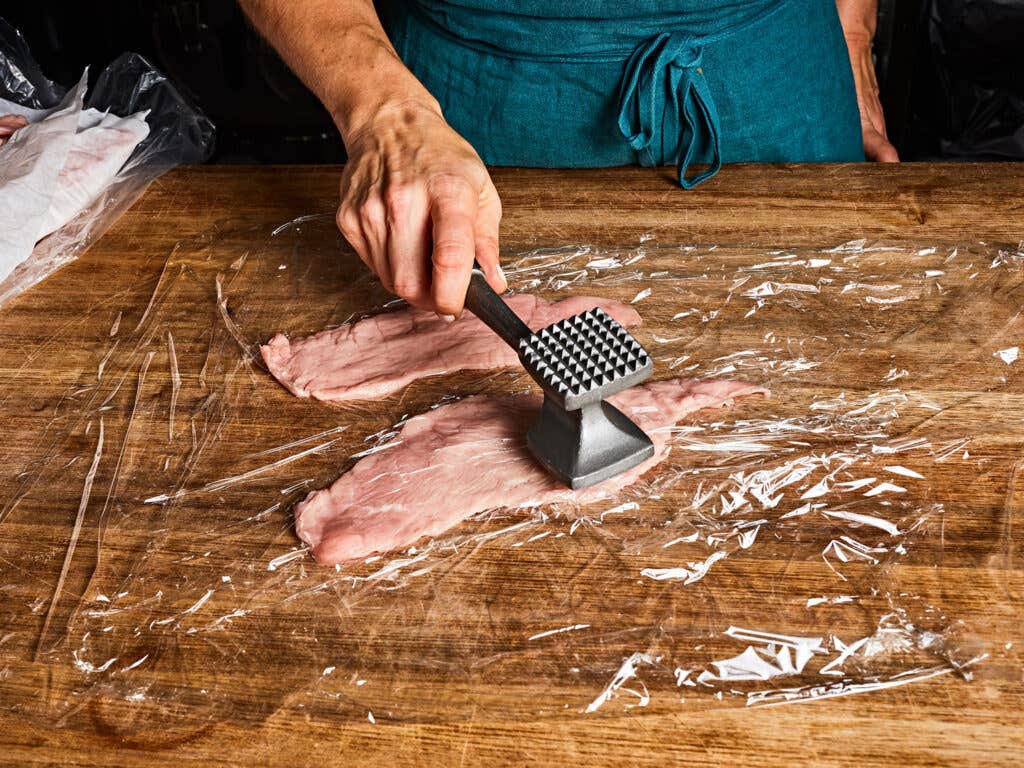
Pound the Cutlets
Place the veal between two sheets of plastic wrap to prevent sticking, then pound with a meat mallet. You’re aiming for a thickness of about ⅛ inch—you want the cutlets to be thin and delicate, but not so thin that they’ll dry out when cooked. Each piece should be of uniform thickness so that the meat cooks evenly and at the same rate. You can also ask your butcher to pound the cutlets for you to get your saltimbocca on the table even faster.
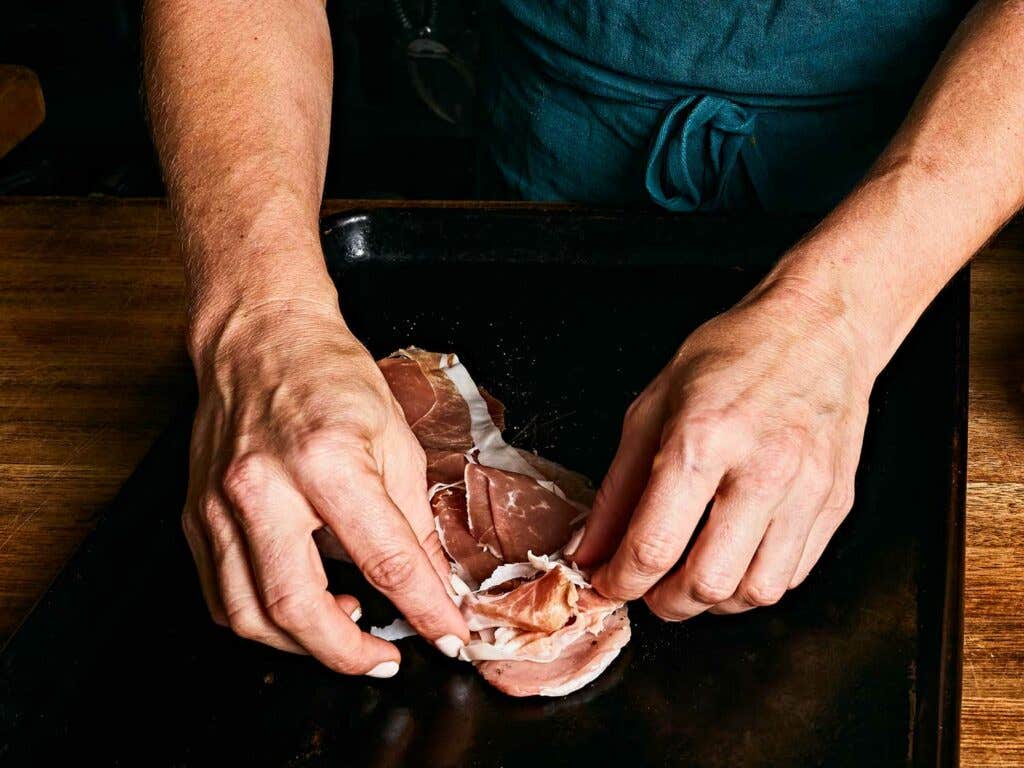
Layer with Prosciutto and Sage
Top each piece of veal with a few slices of prosciutto, then press gently with your fingertips so they adhere well to the meat. While some saltimbocca recipes call for rolling the ham inside the veal, we’re partial to the crispy texture you get from leaving the prosciutto on the outside of the cutlets.
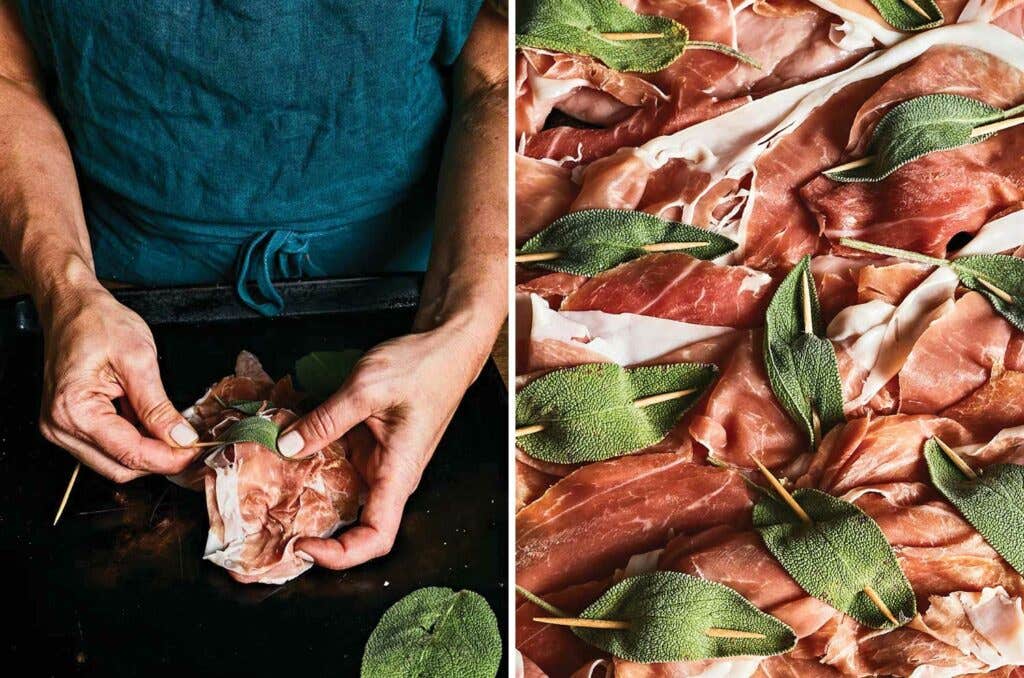
Now comes the fun part: Center two or three fresh sage leaves over the prosciutto and attach them with toothpicks, weaving the toothpicks in and out as if you were taking a stitch. Fastening the sage to the exterior not only makes for a beautiful presentation, but it also allows the herb to release its aromatic oils into the skillet during cooking.
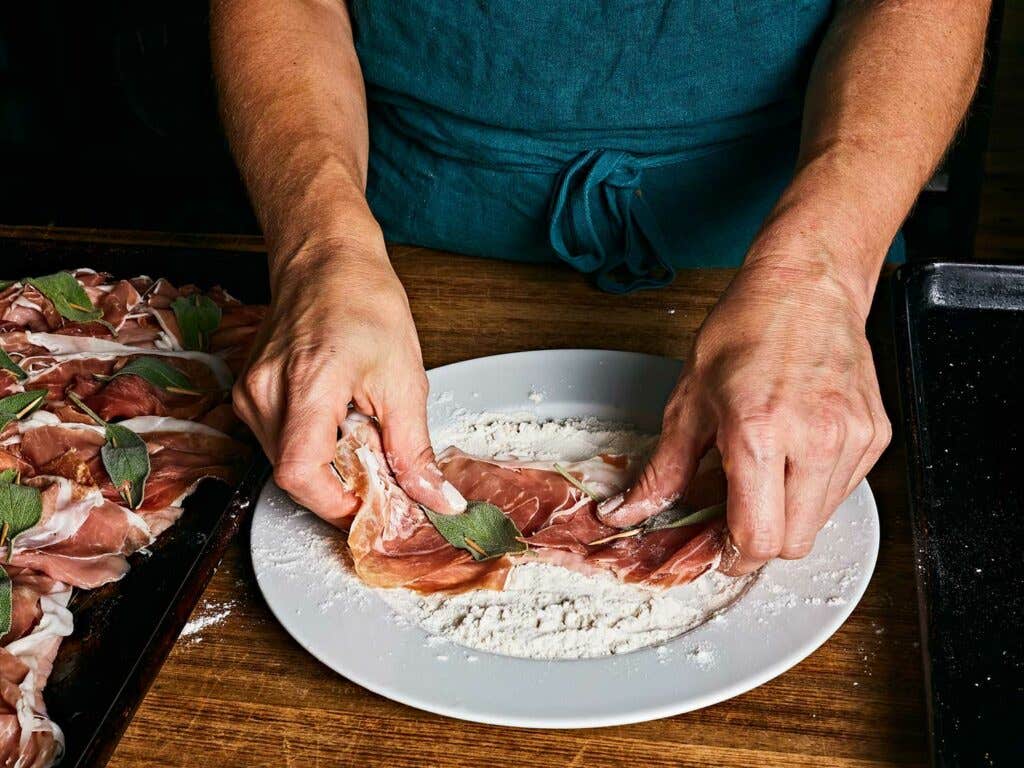
Dredge in Flour
A light coating of flour is key before pan-frying the veal: it encourages the meat to brown, and when the cutlets are returned to the pan just before serving, gives the sauce depth.
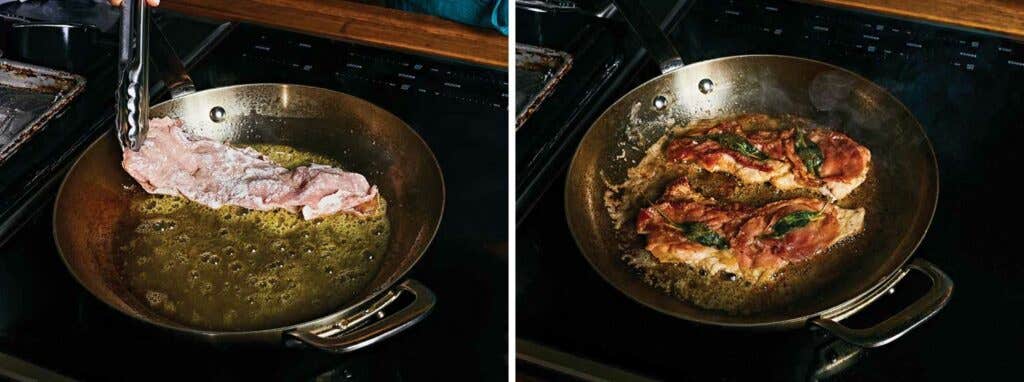
Fry in Batches
Heat equal parts olive oil and butter in a skillet over medium-high. Cook the cutlets two at a time to avoid overcrowding. You want the the prosciutto to become a crisp ruffle and the veal to lightly brown, about 1 minute per side. Transfer the meat to a paper towel-lined plate to drain, then discard the grease in the pan. Continue pan-frying the remaining cutlets with more oil and butter.
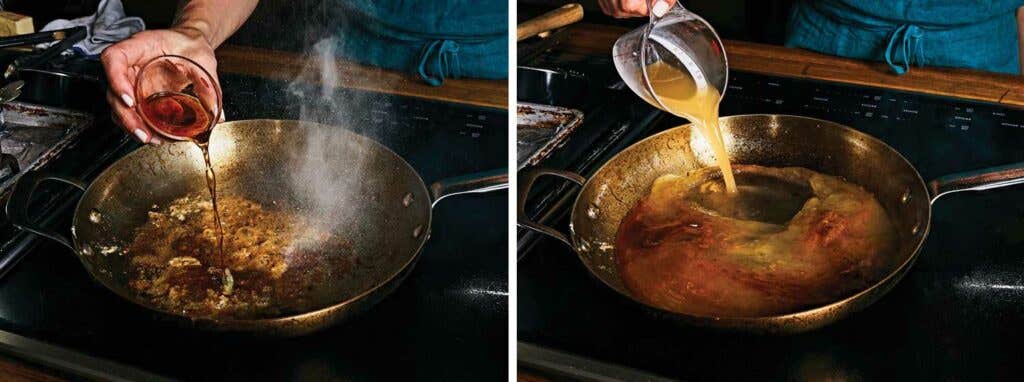
Make the Pan Sauce
Once the cutlets are cooked, drain and discard the grease from the pan once more. Return the skillet to the heat, add a splash of marsala, and scrape up all the fond, or the browned bits at the bottom of the pan. For a more acidic sauce, try substituting white wine for the marsala.
Once the pan is deglazed and the wine has reduced by half, pour in a cup of chicken stock (preferably homemade) and reduce by half again. Stir in the remaining butter to create a silky, luscious pan sauce, then drizzle over the cutlets. Or if you prefer a thicker sauce, return the cutlets to the pan and cook for a minute or two.
Serve with crusty bread to soak up those delicious juices, or take a page out of Bastianich’s book and plate with a tangle of garlicky sautéed spinach.
Ingredients
- 8 (2-oz.) veal cutlets, preferably from the veal top round
- Kosher salt and freshly ground pepper
- 16–24 thin slices of prosciutto
- 16–24 fresh sage leaves
- 1⁄2 cup flour
- 8 Tbsp. extra-virgin olive oil
- 12 Tbsp. unsalted butter
- 1⁄4 cup marsala
- 1 cup chicken stock
Instructions
Step 1
Step 2
Step 3
Step 4
- Using a meat mallet, pound the veal cutlets, one at a time, between 2 sheets of plastic wrap until each piece is about 1⁄8 inch thick. Lightly season with salt (little is needed, as prosciutto is salty) and pepper to taste.
- Lay 2–3 slices of prosciutto atop each piece of veal, gently pressing prosciutto against veal to adhere. Place 2–3 sage leaves on top of the prosciutto and stitch them into the veal with toothpicks. Place the flour on a large plate. Dredge each piece of veal in the flour, shake off any excess, and set aside.
- In a 12-inch skillet, heat 2 tablespoons of the oil and 2 tablespoons of the butter over medium-high. Add 2 pieces of veal and cook, turning once, until the prosciutto side is crisp and the veal side is lightly browned, about 1 minute per side. Transfer the meat to a paper towel-lined plate; drain and discard the oil and butter from the skillet. Repeat this process with more oil, butter, and the remaining meat. Remove and discard the toothpicks.
- Drain and discard the oil and butter from the skillet; place over high heat. Add the marsala; cook, scraping up browned bits, until reduced by half, 1–2 minutes. Add the stock; reduce by half, about 3 minutes. Stir in the remaining 4 tablespoons of butter; reduce heat to medium. Return meat to skillet; cook, turning occasionally, until sauce thickens slightly, 1–2 minutes. Transfer to a platter and serve. (Alternatively, drizzle the pan sauce over the meat and serve.)
Keep Reading
Continue to Next Story
